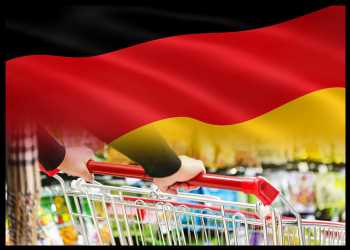
German Inflation Rate Slows Slightly On Weaker Energy Price Growth
December 19, 2022Germany’s consumer price growth slowed in November amid a modest easing in energy prices, but the inflation rate remained high denying any respite to the European Central Bank policymakers who are set to deliver yet another interest rate hike later this week.
Consumer price inflation in the biggest euro area economy eased to 10.0 percent from 10.4 percent in October, latest figures from the Federal Statistical Office, also known as Destatis, showed Tuesday.
The consumer price index, or CPI, dropped 0.5 percent from October, when it rose 0.9 percent.
The harmonized index of consumer prices, or HICP, which is meant for comparison of inflation rates among EU members, rose 11.3 percent year-on-year following an 11.6 percent increase in October.
Compared to the previous month, the EU measure of inflation was unchanged in November after a 1.1 percent rise in October.
All figures matched their flash estimates released on November 29.
“We see price increases for more and more other goods, in addition to energy,” Destatis President Georg Thiel said.
“What has become particularly notable for households is the continuing increase in food prices.”
Destatis said energy and food prices, in particular, have increased considerably since the war in Ukraine and have had a substantial impact on the inflation rate.
Further, the supply and delivery bottlenecks due to the war in Ukraine, other geopolitical crises, and the price movements at upstream stages in the economic process are also keeping inflation high.
Data showed that energy inflation slowed to 38.7 percent in November from 43.0 percent in October, mainly due to large increase in household energy prices. Natural gas prices continued to surge and heating prices also rocketed.
As Germans turned to alternative sources of energy for heating during the winter, prices of firewood, wood pellets and other solid fuels soared 96.3 percent and those of heating oil jumped 55.0 percent from a year ago.
Electricity prices rose 27.1 percent and motor fuel prices climbed 14.6 percent.
The main reason for the high prices of energy products in general is the international purchase prices as well as the increase in the CO2 charge, from 25 to 30 euros per tonne, which became effective at the beginning of the year, continued to have an impact on energy product price rises, Destatis said.
Food prices rose 21.1 percent year-on-year following a 20.3 percent gain in the previous month, amid a surge in prices for edible fats and oils, dairy products and eggs, breads and cereals, and vegetables.
Excluding energy prices, the CPI inflation rate was 6.6 percent in November and stripping off the volatile prices of both energy and food, the rate was much lower at 5.0 percent, only half the overall inflation rate.
On a month-on-month basis, consumer prices declined 0.5 percent, led by a 25.3 percent slump in prices of package holidays. Energy prices decreased 1.2 percent, while food prices grew 1.2 percent.
The German government has adopted a the third relief package that consists measures aimed at containing the increase in energy prices. The turnover tax cut on gas and district heating, from 19 percent to 7 percent, became effective in October 2022, and in November 2022 that legal provision was retrospectively introduced also for liquefied gas to apply as of October 2022, Destatis said.
Authorities have confirmed steps such as one-off payment of the gas and heating invoices in December and they are considering more relief measures to help households and businesses cope with energy bills.
A final decision is awaited on temporary gas, heating and electricity price freezes to take effect at the beginning of 2023.
The special effects caused by the EUR 9 ticket and the fuel discount from the second relief package ended at the end of August, while the scrapping of the EEG surcharge as of July 2022 is still reflected in the index.
The EEG levy, also known as the green power surcharge, was introduced in 2000 to subsidize the expansion of solar, wind, biomass and hydropower plants. The levy was included in end consumers’ electricity bills and revenues from the EEG levy have so far gone into the so-called EEG account of the transmission system operators.
Source: Read Full Article


